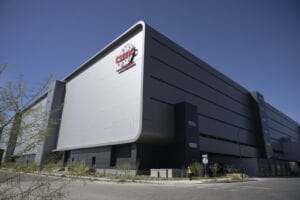New York City is a place defined as much by its skyline as it is by the people who live and work within it. From ornate pre-war buildings to sleek, modern high-rises, the city’s architecture tells a story of ambition, innovation, and endurance. But behind the scenes of these structures is a constant, often unseen effort to maintain and restore their exteriors—work that demands precision, expertise, and an understanding of both tradition and progress. Over the last 20 years, the field of façade restoration has undergone a remarkable transformation, shaped by changes in regulation, technology, and client expectations. For companies like Schnellbacher Sendon Group, who have been at the forefront of this industry since 2005, this evolution is more than just a trend—it’s the foundation of their craft.
LOCAL NEWS: 100 best places to work and live in Arizona for 2025
A City Built to Last, but Not Without Effort
Façade restoration is more than just cleaning or repairing a building’s outer shell. In a city like New York, where buildings are exposed to harsh weather, pollution, and time itself, maintaining exterior integrity is critical not only for aesthetics but for safety and structural soundness. Two decades ago, much of this work was reactive. Building owners would often wait until visible signs of wear—cracks, water infiltration, spalling—forced repairs. Inspections were less rigorous, and documentation was often inconsistent.
The introduction and enforcement of Local Law 11, now known as the Façade Inspection & Safety Program (FISP), significantly changed this reactive approach. Property owners of buildings taller than six stories are now required to conduct regular façade inspections and make necessary repairs every five years. This regulation has redefined the industry, creating a more proactive culture around façade maintenance. The law brought both challenges and opportunities, especially for specialized firms that understood how to navigate the intricate blend of compliance, craftsmanship, and logistics.
Craftsmanship Meets Compliance
As the regulatory environment matured, so did the expectations of building owners and city officials. Façade restoration companies needed to go beyond patchwork fixes. They were required to deliver work that not only satisfied legal requirements but also preserved architectural integrity, especially for historic or landmarked buildings. For firms like Schnellbacher Sendon Group, this was a welcome evolution. Their focus on exterior restoration meant they could meet these expectations with a level of detail and professionalism that general contractors often lacked.
Restoring a façade isn’t just about bricks and mortar. It’s about understanding the materials used in different eras, matching those materials precisely, and applying techniques that respect both the building’s original design and today’s building codes. For example, restoring a brownstone from the early 1900s involves a completely different process than working on a 1980s glass curtain wall. In either case, the goal is the same: maintain the building’s character while ensuring its safety and performance.
Technology Changes the Game
One of the most significant shifts in the façade restoration industry over the past 20 years has been the integration of technology. In the early 2000s, project planning and documentation were largely analog—blueprints, photos, handwritten notes. Today, high-resolution drone imagery, digital scanning, and 3D modeling allow restoration teams to identify issues with pinpoint accuracy before even setting up a scaffold. These tools not only improve the quality of work but also reduce project timelines and minimize disruptions to tenants and building operations.
Project management software has also streamlined the restoration process. Teams can now coordinate more efficiently, track progress in real time, and maintain open communication with clients. For high-value buildings in Manhattan and beyond, this level of organization is not just appreciated—it’s expected. Clients want transparency, predictability, and professionalism at every stage of a project.
Changing Client Expectations
The clientele in the New York City Tri-state area has become increasingly sophisticated. Whether the client is a co-op board, a commercial property owner, or a preservation society, they often bring a clear set of expectations to the table. They demand more than just technical skill; they want discretion, accountability, and a partner they can trust.
This shift has placed greater emphasis on the softer skills of the trade—communication, reliability, and transparency. Schnellbacher Sendon Group, for example, has built long-term relationships by consistently delivering on these values. Clients trust them not just to restore a façade but to manage a process that affects tenants, timelines, and budgets. In many cases, these are repeat clients who have come to rely on the company’s commitment to clean workspaces, low-profile operations, and professional conduct.
In today’s market, being good at the work isn’t enough. Firms must also demonstrate that they understand the lifestyle and business concerns of their clients. This includes minimizing noise, ensuring site safety, and maintaining clear communication from the first consultation to the final punch list.
While the last 20 years have brought significant changes to façade restoration, the next 20 promise to be just as transformative. Environmental sustainability is becoming a larger consideration, and we can expect to see more integration of green materials and energy-efficient design in restoration projects. Advances in robotics and AI may one day allow for even more precise diagnostics and repair techniques.
But no matter how much the tools or techniques evolve, the core of façade restoration will remain the same: protecting the buildings that shape our cities and preserving the character that gives them life. For companies like Schnellbacher Sendon Group, this mission is both a professional calling and a personal commitment.
In the end, façade restoration is about more than stone and steel. It’s about trust, legacy, and the quiet responsibility of keeping New York City standing tall. As the industry continues to evolve, those who embrace change while honoring tradition will remain essential to the skyline—and to the people who call it home.



